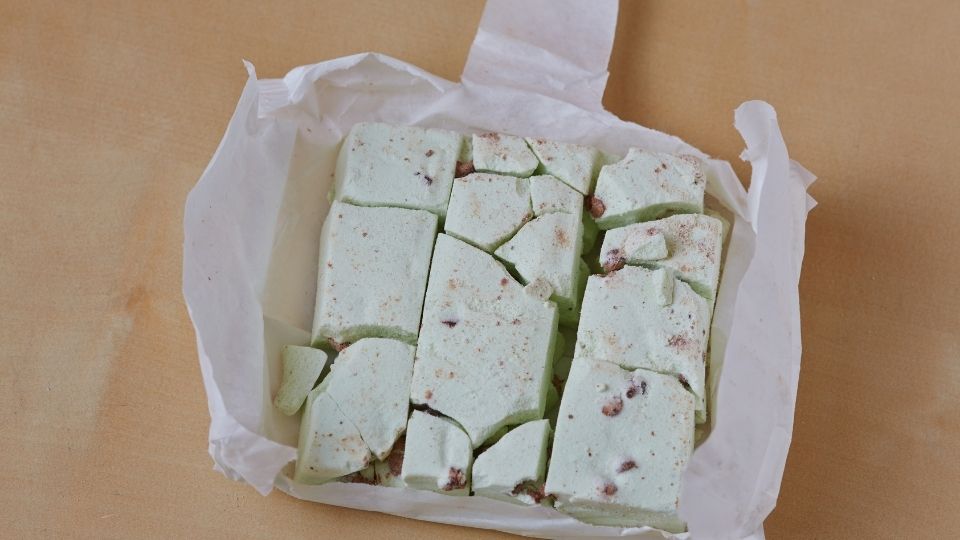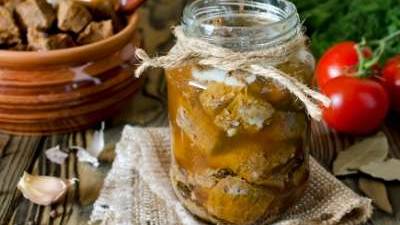Water: Storage and Emergency Use

Our abundant domestic water supply is generally of little concern. However, situations might occur where the supply of safe water is interrupted due to earthquakes or flooding. Interruptions could be for only short periods of time, or in the case of natural disasters, the supply could be cut off for days. Gunlock, Utah, experienced seven days of isolation without power, cell towers, or water, as the flood of 2005 washed out access to the rest of the county.
Ed Bowler lives in Gunlock and St. George, his son Kip, with his wife Lisa, live in Gunlock. Prior to the flood, Ed had commented to Kip, “What on earth are you doing with four 50-gallon drums of water.” Kip replied, “That’s my wife Lisa’s food storage program.” “Isn’t that a touch of over kill?” Ed Commented. After the seven days of isolation, Ed went to Lisa with “hat in hand,” “I am so grateful you had four 50-gallon drums of water for us to use when we were out of water for seven days.” (Portraits of Loss-Stories of Loss, printed by Paragon Press, SLC).
With the potential of flooding due to high snow pack in many Utah counties, it is recommended that citizens evaluate their emergency water supply in the event that water lines are temporarily washed out.
Amount of Water for Storage
The Department of Defense, Office of Civil Defense, states that a quart of water or other fluid a day will sustain life, but humans would be much more comfortable, especially in warm weather, with 1 gallon per day. Recommendations for the amount of water to be stored vary from one-half gallon to 1 gallon per day per person, for food preparation and drinking purposes only. An additional one-half to 1 gallon per day is recommended for personal hygiene and dishwashing. Only a short-term supply of water can be stored in most homes. Storing at least a three-day supply is recommended, or up to two weeks if you have adequate storage space.
Containers for Water Storage
Many types of containers are available for water storage. Containers should be “food grade,” meaning they were meant to hold food or water. The most commonly used containers are glass, plastic, and metal. The best containers have secure lids and a spout or spigot that allows for dispensing water with minimal or no contamination.
Glass
Glass provides a fairly effective container for storage and is non-permeable to vapors and gases. Glass should not be the sole source of water storage since it is easily broken and may be damaged during an emergency event.
Plastic
Plastic bottles or jugs previously used for beverages make excellent containers. They are lightweight and fairly sturdy. Food-grade plastic containers are sold commercially for water storage and can be purchased at many stores. Non-food-grade plastic containers are not recommended for food storage because harmful chemicals can leach into the food. Very lightweight plastic might split or degrade under storage. Most plastics used in waterbeds or pool liners are not approved food storage plastics.
Metal
Stainless steel can successfully be used for water storage. Other metals are not optimal containers unless they are coated and made specifically to hold food or water. Pewter or lead soldered metals should be avoided.
Cleaning and Sanitizing Water Containers
Water containers should be cleaned with warm soapy water and rinsed. Special attention should be given to containers that previously contained food or beverages. Fill container with potable tap water, and then add 1 tablespoon bleach for each 1 gallon of water. Shake well, turning bottle upside down a time or two to sanitize the cap. Let stand for 1 minute, and then pour out the bleach water. Let the container air dry.
Heat Treatment
One effective way to store water is in clean canning jars. Fill clean mason type quart or half-gallon jars with water, leaving 1 inch of headspace at the top of the jars. Attach two piece metal canning lids. Fill a boiling water canner half full of water and preheat the water to approx. 140 degrees Fahrenheit. Place jars into the water bath. Add more boiling water if necessary so that jars are covered by 1 inch of water. When water returns to a rolling boil, process jars for 20 minutes. Remove jars from the canner and allow them to cool. After seals set, remove screw bands and place jars in storage. Canned water often will have a white mineral precipitate or ring at the water level. This is normal.
Chlorine Treatment
Liquid chlorine bleach (unscented) can be used to disinfect water for long-term storage. Use fresh chlorine bleach since it can lose up to half its strength after 6 months. One gallon can be treated by the addition of 1/8 teaspoon of liquid chlorine bleach containing 4 to 6 percent sodium hypochlorite. (Most bleach contains 5.25 percent.) This is equivalent to 8 drops of liquid chlorine bleach. During storage the bleach will break down into oxygen and table salt.
Bottled Water
Bottled water can be a quick and convenient way to store water. Although it is convenient, it is not considered to be any safer than water from your tap. Standards for public water supplies are set by the Environmental Protection Agency and those for bottled water are set by the U.S. Food and Drug Administration. Additionally the International Bottled Water Association (IBWA) works with the industry to assure that FDA regulations are followed, assuring a safe, high quality product.
Where to Store Water
Store water in a clean, dry place off the ground and away from sunlight. Since plastic is permeable to certain vapors, water stored in plastic should not be near gasoline, kerosene, pesticides or similar substances. If you have freezer space, store water in the freezer. It not only acts as water storage but if the electricity goes out it will help keep foods frozen. Leave 2-3 inches of headspace in container to allow for expansion as the water freezes. When potable water (drinkable water) is properly disinfected and stored, it should have an indefinite shelf life. To maintain optimum quality, water should be checked every 6-12 months. Check for secure lids, broken or cracked containers and for cloudiness. Replace the water and treat as before.
Emergency Sources of Water
In an emergency, if you have not previously stored enough water, you can use the potable water from pipes, your hot water heater, water softener reservoir and ice cubes. Be sure and turn off the heat source first when removing water from a hot water heater. Unless you are advised that the public water supply has been contaminated and is not safe, open the drain valve at the bottom of the water heater and salvage the water stored in the heater and any that may drain back through the pipes. Once water has been drained into clean, sanitized containers, add 8 drops of chlorine bleach per gallon of water, and stir or shake the solution to mix it. Let it set 30 minutes before use. It is advised only to use the water from your toilet tank, waterbed, or swimming pool as a last resort, since these sources may have chemicals present making them non-drinkable. Treat these sources of water as nonpotable. Never use water from the toilet bowl. Other sources of non-potable water are river or lake water. Filter murky or cloudy water through clean cloth or allow the sediment to settle before disinfecting it as described below.
Emergency Disinfection of Non-potable Water
Some emergency situations could occur where the only water available is contaminated by disease-causing organisms. In this case, the same procedures can be used as for treatment of stored water as follows:
Heat Treatment
Boiling is the most preferred method. This heat treatment requires water to be boiled in a vigorous rolling boil for 5 minutes for any altitude in Utah. Taste may be improved by pouring the boiled water back and forth from one clean container to another several times to incorporate air.
Chemical and Filtration Treatments
Chemical treatment is less desirable than heat treatment because the effectiveness is dependent on several variables such as: (1) the amount of organic matter in the water, (2) water temperature and (3) the length of time after the chemical is added until it is used. Furthermore, chlorine or water purification tablets will not kill parasite cysts such as Giardia and Cryptosporidium. It is recommended to both filter and chemically treat nonpotable sources of water to minimize potential contamination from bacteria, viruses and parasites.
Chlorine Treatment
Clear water can be treated with ¼ teaspoon (16 drops) of liquid chlorine bleach per gallon. Use fresh bleach. Mix the water and allow it to stand for 30 minutes before using. If water is cloudy in appearance, chemical treatment is not recommended. A slight chlorine odor should be detectable in the water. If not, repeat the treatment and let stand an additional 15 minutes before using.
Water Purification Tablets
Different types of tablets are available for water purification purposes. Be sure to follow the manufacturer's directions for treatment and allow sufficient time for the chemical to work before using. Check the label for expiration date, since the tablets can become ineffective with time. Most tablets have a storage life of approximately 2–5 years unopened.
Commercial Water Filtration Units
You can filter water if you have a commercial or backpack filter that filters to 1 micron. These are available in sporting good stores and are recommended for use when backpacking. They are not recommended to filter large volumes of water or for water with a lot of sediment. Filtering at 1 micron eliminates bacteria, parasites such as Giardia and Cryptosporidium, but it may not eliminate viruses. Therefore, it’s recommended that 5-7 drops (1/8 teaspoon) of chlorine bleach be added per gallon of filtered water. Wait 30 minutes before using the water, or cap the containers and store them in a cool, dry place.
Contamination by Radioactivity and Chemicals
No effective method for decontamination of water that contains radioactive or chemical fallout is available for home use. This decontamination should be supervised by local or state health officers.
Sources
- Lauritzen, Georgia. Water Storage, Utah State Cooperative Extension, 1999.
- Resource Tipsheet: Water Storage, Colorado State University Cooperative Extension, August 26, 2004.
- Emergency Drinking Water Supplies, North Carolina Cooperative Extension Service, retrieved online, March 28, 2005, from http://www.bae.ncsu.edu/programs/extension/publicat/wqwm/emergwatersuppl.html
- International Bottled Water Association Web site, retrieved online, March 28, 2005, from http://www.bottledwater.org
- Ground Water & Drinking Water, U.S. Environmental Protection Agency, retrieved online, March 28, 2005, from http://epa.gpv/safewater/
- Emergency Disinfection of Water. 1993. U.S. Environmental Protection Agency. EPA 810-F93-002. Retrieved online, April 6, 2005, from http://www.epa.gov/ogwdw000/faq/emerg.html.
Authors
Ronda H. Olsen, Family Consumer Science Agent
Carolyn Washburn, Family Consumer Science Agent
Deloy Hendricks, Extension Nutrition and Food Science Specialist
Brian Nummer, Extension Food Safety Specialist
Related Research






